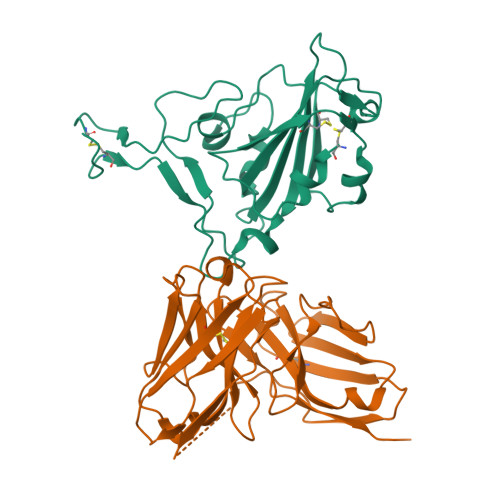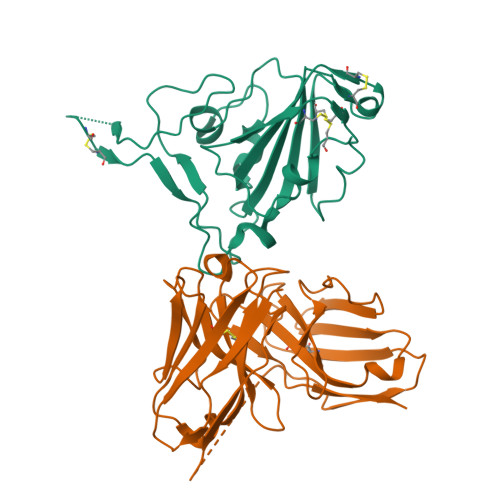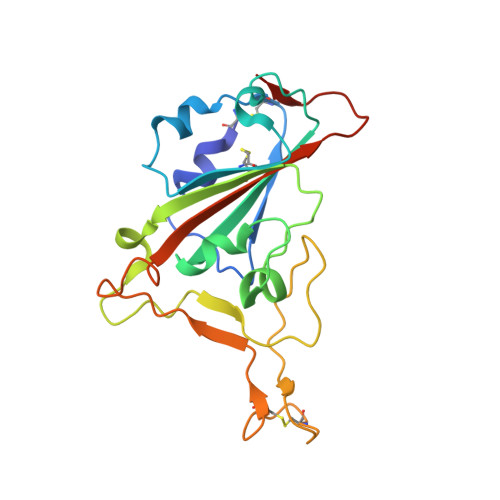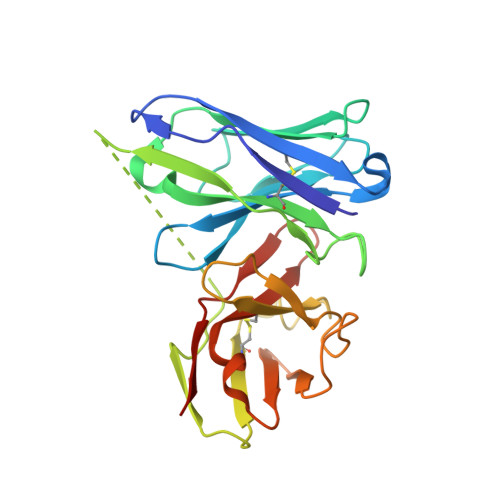Discovery and characterization of potent pan-variant SARS-CoV-2 neutralizing antibodies from individuals with Omicron breakthrough infection.
Guo, Y., Zhang, G., Yang, Q., Xie, X., Lu, Y., Cheng, X., Wang, H., Liang, J., Tang, J., Gao, Y., Shang, H., Dai, J., Shi, Y., Zhou, J., Zhou, J., Guo, H., Yang, H., Qi, J., Liu, L., Ma, S., Zhang, B., Huo, Q., Xie, Y., Wu, J., Dong, F., Zhang, S., Lou, Z., Gao, Y., Song, Z., Wang, W., Sun, Z., Yang, X., Xiong, D., Liu, F., Chen, X., Zhu, P., Wang, X., Cheng, T., Rao, Z.(2023) Nat Commun 14: 3537-3537
- PubMed: 37322000
- DOI: https://doi.org/10.1038/s41467-023-39267-x
- Primary Citation of Related Structures:
7YVE, 7YVF, 7YVG, 7YVH, 7YVI, 7YVJ, 7YVK, 7YVL, 7YVM, 7YVN, 7YVO, 7YVP, 8GOU, 8GPY - PubMed Abstract:
The SARS-CoV-2 Omicron variant evades most currently approved neutralizing antibodies (nAbs) and caused drastic decrease of plasma neutralizing activity elicited by vaccination or prior infection, urging the need for the development of pan-variant antivirals. Breakthrough infection induces a hybrid immunological response with potentially broad, potent and durable protection against variants, therefore, convalescent plasma from breakthrough infection may provide a broadened repertoire for identifying elite nAbs. We performed single-cell RNA sequencing (scRNA-seq) and BCR sequencing (scBCR-seq) of B cells from BA.1 breakthrough-infected patients who received 2 or 3 previous doses of inactivated vaccine. Elite nAbs, mainly derived from the IGHV2-5 and IGHV3-66/53 germlines, showed potent neutralizing activity across Wuhan-Hu-1, Delta, Omicron sublineages BA.1 and BA.2 at picomolar NT 50 values. Cryo-EM analysis revealed diverse modes of spike recognition and guides the design of cocktail therapy. A single injection of paired antibodies cocktail provided potent protection in the K18-hACE2 transgenic female mouse model of SARS-CoV-2 infection.
Organizational Affiliation:
State Key Laboratory of Medicinal Chemical Biology and College of Life Sciences, Nankai University, 38 Tongyan Road, Tianjin, 300071, China. guoyu@nankai.edu.cn.




















